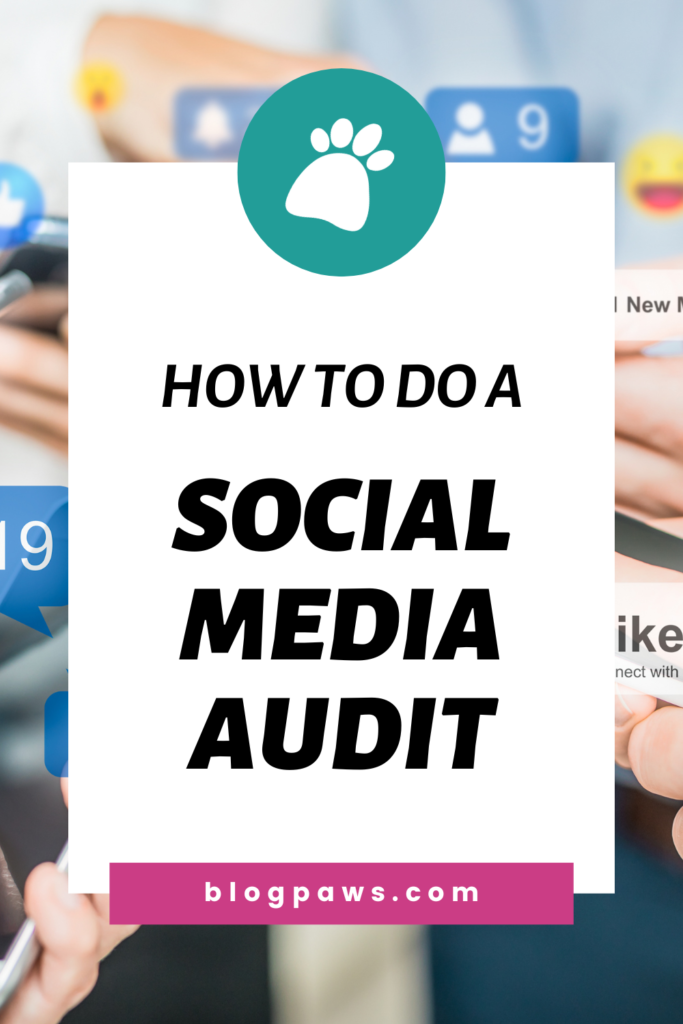How To Do a Social Media Audit
*Updated: January 17, 2023
It’s the most wonderful time of the year, which means it is also a perfect time to engage in a social media audit of your social properties. No matter what time of year you are reading this blog post, this information will serve to look under the rock that is all of your social media properties. Doing so will keep you running smoother, growing stronger, and embracing the social media channels on which you need to be focused.
By performing a social media audit, you will see where you are at present on your platforms, review patterns of where you are headed, and also discover what you can improve on in the process. To help you get started, we have put together this step-by-step guide explaining how to do a social media audit for your small pet business.
What Is a Social Media Audit?
A social media audit is more than listing platforms and how many followers you have for each; it means going in-depth to see where you’ve been and where you are headed. It involves looking at what efforts on your social media have been performing well for you as well as identifying opportunities for improvement. When you audit social media in your small business, you provide yourself with valuable information to guide your social media marketing plan moving forward.
Inventory of Social Media: Where You Are and Where to Go
All of the advice posts and technical articles about social media mean absolutely nothing without a social media plan in place. But if you’re interested in learning how to do a social media audit, you have to start at the beginning. This means determining where you are in terms of platforms. You can then assess where you want to go (platforms you need to be on).
- First, audit your brand profiles, links, images, and account/about information across platforms. First impressions are everything, especially on social media. If I landed on your LinkedIn page, for example, is your information up to date? Are all addresses, emails, and “about” sections current and reflective of you and your brand?
- Second, change passwords. This is a key element of a social media audit.
- Third, determine your brand’s consistency and variations. Our Director of Community Education, Aimee Beltran, writes about how to create a branding strategy for your blog. The same holds true for social media: What works on Pinterest would be different on Twitter. How you “talk” on Facebook varies from personal page to business page.
- Fourth, list all the platforms you are on. This can be as simple as a piece of paper, or for the more e-planner types, you can use organizational tools like Trello or Google Drive with a spreadsheet. In Trello, you can set up a column for each platform you are on at present.
- Finally, get to analyzing. This is one of the first things I do when assessing social media platforms with which I engage. The social media audience you have on Facebook is likely to be a bit different on Instagram, so keep that in mind. Factors like the interests and demographics of each platform come into play with the analysis process. If you want to reach more women, for example, between the ages of 25 and 45 on your Facebook page, but you are not capturing that demographic at present, determine why.
Community Analytics
Each social media platform you engage on has its own unique community. For the purposes of an audit, look at each channel and determine if you have an upward trend in terms of follower growth. Keep in mind that someone with a million followers and 2 percent engagement is missing the mark. A smaller and more engaged community is more valuable to brands, your blog, your online influence, and longevity.
Included in analytics is knowing one’s own community by social media platform. Detailed demographic data, such as that provided by Facebook, includes everything from country to gender, age-range and even interests. Are you targeting the right audience? If you don’t know this information, or if you haven’t reassessed this in a while, you may want to go through the exercise of creating a buyer persona. This is a fictional character that represents your ideal audience, highlighting the key details of who you are trying to reach.
Google Analytics is one of the most robust tools you can use in a social media audit.
Where is your audience, and in which time zone? Google Analytics and Facebook Insights (or insights provided by other social media platforms) are tools that you can use to determine this.
Social Media Content Audit
Content is the cornerstone of any social media plan. What are you posting, and when? Look at the types of content you post on social: video, text, and images. What type of content does well for you? Are videos doing better than images? Are visitors to your social media platforms staying to watch the whole video you post or a quick three seconds?
Timing is everything, as the saying goes. The same holds true in the social media space. What time of day does content perform better for you?
A SWOT analysis comes in handy at this point. SWOT stands for Strengths, Weaknesses, Opportunities, and Threats. Pet blogger Bryn Nowell says, “A S.W.O.T. analysis is a tool used to benchmark internally and externally, using the key factors that you, the blogger, view to be important measures of success. The acronym stands for Strengths, Weaknesses, Opportunities, and Threats. Typically represented in a grid, businesses can visualize the current and potential areas for success and items of concern in a single snapshot.”
Assess Spend
Are you putting money into boosts, ads, etc on social media? If you spend money on social promotion and boosts, the engagement on the posts should be proportionate to the money you are spending. For example, if you spend $1,000 on a Facebook ad, and it merits a 20 cent per click engagement, that is likely to be a good measurement if it was a targeted ad. However, if the ad merited 50 cents per click, then that ad is probably not working for you. In looking at your ad spends month over month, you can look for patterns of what is and isn’t working.
Data assessment and checking your spend each month will reveal important information for future spends and if the social media advertising is worth it. Keep in mind, the spend might be worth it if you are targeting the right audience with the right type of content at the right time.
Set Social Goals
Now that you have learned how to do a social media audit and gone through the process of assessing your efforts on each platform, it’s time to implement some goals. Take a peek at your Twitter followers, for example. Look at the number and set a goal for how many followers you want by the next month at the same time. If you are on SnapChat and have zero use for it, and after performing a demographic study, you decide it isn’t worth your time, then nix it. Not every platform is made for you to be on. You may not LIKE a certain platform, but it might make sense to be on it if your audience is there.
What social media platforms should you be a part of? It depends on your needs, goals, and where your tribe is: Find that tribe and then pursue them.
Choose the social media platforms you have the time to both develop and maintain. Don’t get involved in a social media channel because everyone else is doing it. I tend to stay with the “pick four and no more” rule of social media (it’s my rule, by the way). Maybe yours is “Pick Five to Stay Alive.” Whatever you decide, stick to it. Pick your beams.
Is your audience currently most active on a platform that you don’t have the time or resources to build right now? Create an account to claim your handle and leave a post telling people where they can find you if they come across it.
Kick or Keep
Make a record of which types of content and topics work for your audience on each platform and then get to creating more of the same.
Let’s use Twitter, Facebook, and Instagram for this example, What is your follower count on each platform each month? Is it increasing? Is the engagement rate on each platform increasing or staying the same? If it is faltering or on a downslide, why? How many posts are you sharing on each platform each week? You want social media to improve on your networks. Keep the platforms you need to be on based on the demographic portion of your audit.
Social Media Planning
You must have a social media plan in place after completing the audit. Couple this with a social media editorial calendar. It sounds like a lot of work, and at first, it is, but by keeping track of this monthly, you can get your social media affairs in order.
Many bloggers will use tools like Trello to build a blogging editorial calender. The same concept applies to your social media. On Instagram, if you decide to focus there, and most pet influencers should and do, then consider having an Instagram Editorial Calendar in place.
Training Needs
Once your social media audit is complete, there will be obvious needs in place. Every time I do an assessment of social media platforms, I realize where I:
- Need more training
- Areas that need improvement
- Weaknesses that are identified and need focus
No matter who you are and how long you’ve had a social media presence, there should always be areas where you need improvement. Personally, I want to get better with my email marketing because I know the one community I can always count on are my tried and true subscribers. Email subscribers are hungry for your information, whereas social media platforms can disappear at any time. Are you converting followers from social to email? These are questions to ask yourself, identify needs, and then implement them.
Three-Month Assessment
I personally review social media monthly, and I suggest you do the same. I have a spreadsheet set up on Google Drive, but you might prefer it elsewhere. At the very least, assess your social media platforms every quarter for maximum results and improvement.
If learning how to do a social media audit felt overwhelming or overly time-consuming, you may be interested in using a social media audit tool or service from a marketing agency. But these resources often come with a high price tag. I recommend using the steps above to create your own social media audit checklist to help guide you through the process each time. This will help to ensure that you don’t miss any important steps.
How often do you perform a social media audit? Where can you use improvement? Share in the comments below.
Carol Bryant is the Marketing and Social Media Manager for BlogPaws and runs her own blog, Fidose of Reality and its fundraising arm, Wigglebutt Warriors. When not busy playing with her Cocker Spaniel, Dexter, she stays far away from cooking. Her trademark is her mantra and is tattooed on her arm: My Heart Beats Dog.®


